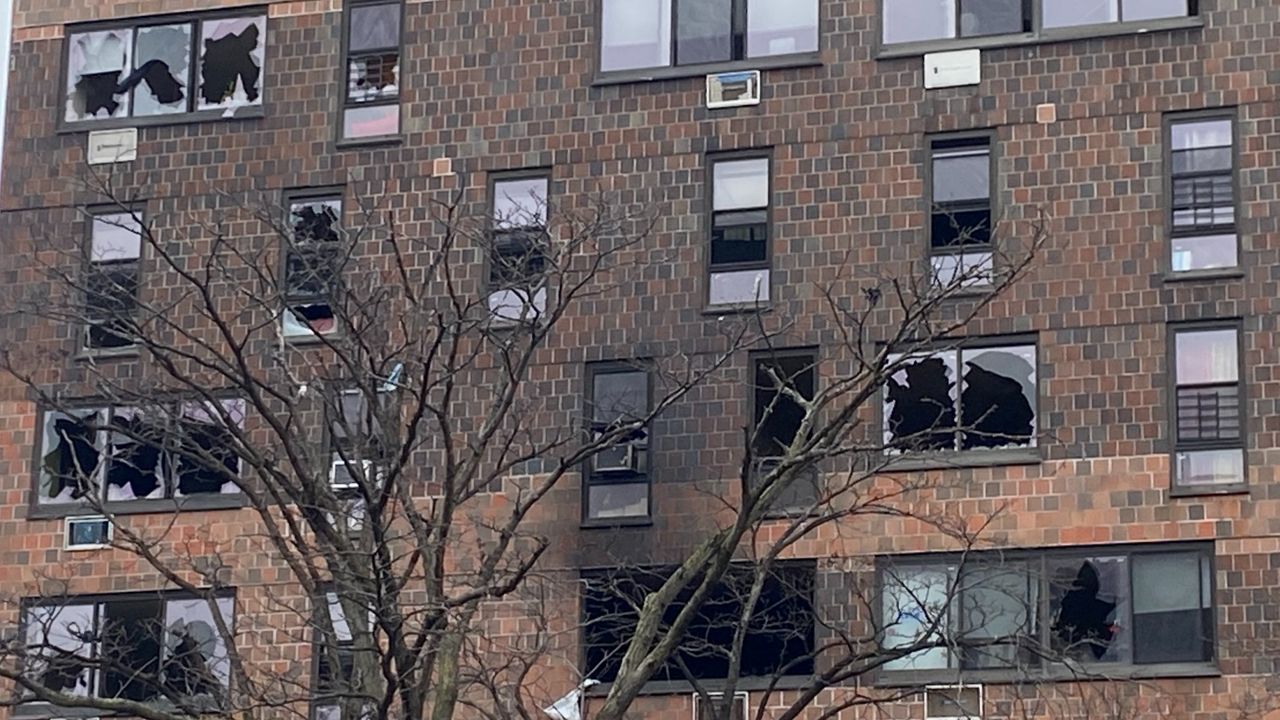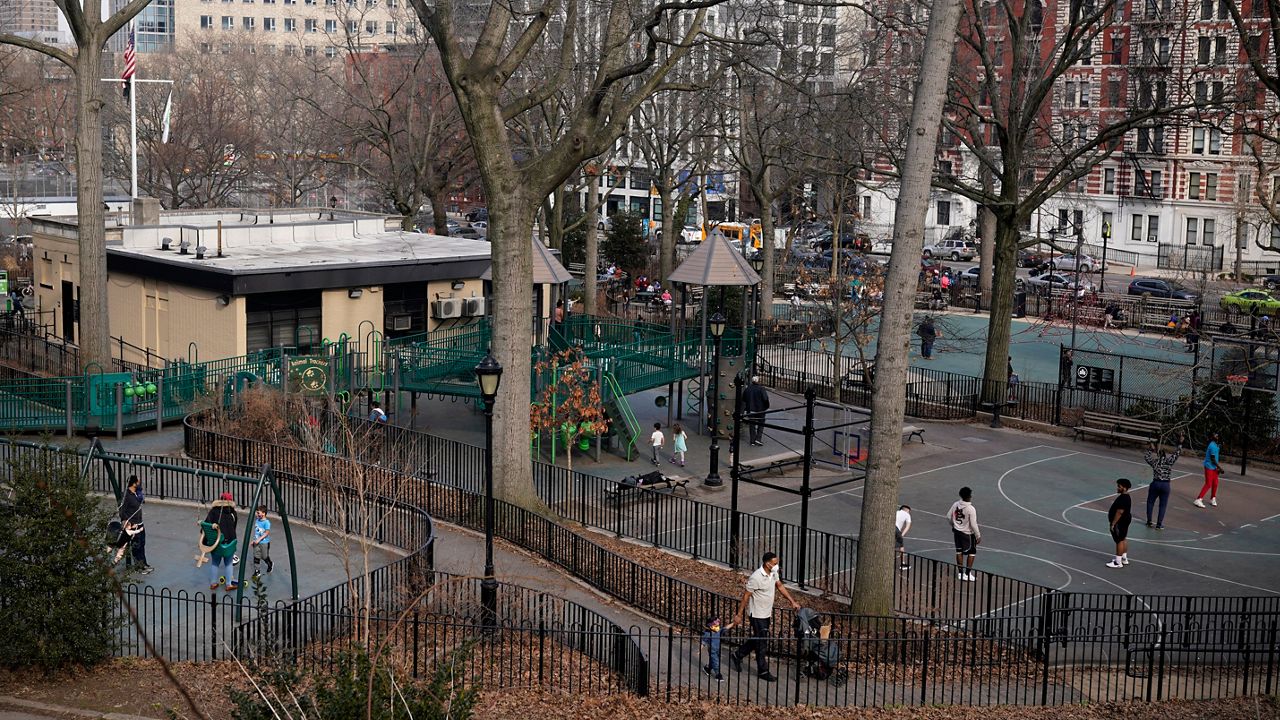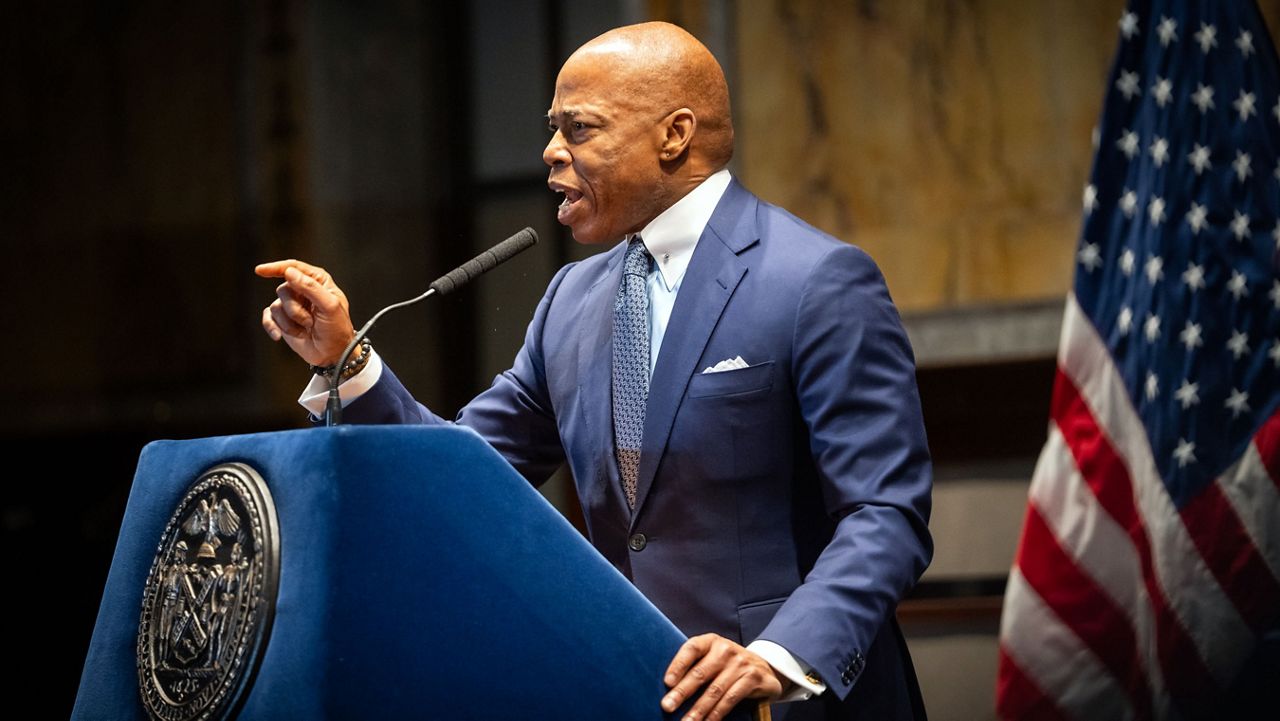The building in the Bronx where a fire Sunday led to 17 deaths has a history of complaints and building violations over lack of heat, a defective door, pests and elevator malfunctions, city records show.
Fire department officials have said the fire was sparked by a malfunctioning space heater in a duplex unit on the second floor. Smoke spread within minutes up through the 19-story unit, in the Fordham Heights neighborhood. All the fatalities in the building, which included eight children, came from smoke inhalation, fire officials said.
Mayor Eric Adams said Monday that the city was investigating whether a faulty mechanism on the door to the unit where the fire began may have prevented the door from closing, and allowed smoke to spread — despite other doors in the building having functioning self-closing mechanisms.
“There may have been a maintenance issue with this door and that is going to be part of the ongoing investigation,” Adams said, speaking on ABC’s “Good Morning America.”
Fire Department Commissioner Daniel Nigro said Monday that another faulty mechanism on a stairwell door on the building’s 15th floor also led to a large volume of smoke filling that floor.
Kelly Magee, a spokesperson for the property owners, said that there were no known issues with the smoke alarms, and said that the fire alarm system worked as designed. Magee said that in July 2021, building maintenance staff repaired a lock on the door to the unit where the fire began, and found no issues with the doors self-closing mechanism.
The building has open violations for roach and mice infestations, according to records from the department of Housing Preservation and Development, as well as violations for mold, broken ventilation mechanism and water leaks.
HPD records also show a complaint from last month over a faulty entrance door, lack of heat and roaches in one apartment, as well as a complaint from November over exposed electrical wiring in the lobby. Two other apartments reported a lack of heat last year as well.
Records from the city’s buildings department also show a series of reported elevator violations, all either dismissed or resolved, as well as repeated violations to comply with city laws that require submitting and posting energy consumption information.
Building residents have said that fire alarms often went off in the building multiple times a day, and that they had become used to the sound. Speaking on CNN Monday, Adams said the city was investigating reports of malfunctioning fire alarms, but added that there was no immediate indication that the building was in violation of city fire codes.
In 2018, the City Council passed a law requiring all apartment buildings to have self-closing doors by July 2021. The law was passed months after a 2017 fire in the Bronx left 12 people dead.
The building is owned by a consortium of private housing managers, including Camber Property Group. Camber’s co-founder, Rick Gropper, was a member of Adams’ mayoral transition team.
In a statement, the property owners said they were “devastated by the unimaginable loss of life caused by this profound tragedy.”
“We are cooperating fully with the Fire Department and other city agencies as they investigate its cause, and we are doing all we can to assist our residents,” the statement adds. “Our thoughts are with the families and friends of those who lost their lives or were injured, and we are here to support them as we recover from this horrific fire.”
The building, constructed in 1972, is part of a major series of affordable housing developments in the Bronx called Twin Parks, which led to the creation of 2,250 apartments across 12 sites. The project was led by the state’s Urban Development Corporation, the forerunner to the present-day Empire State Development Corporation.
The project received widespread acclaim from housing advocates, city planners and architects for using unusual sites, such as rocky outcroppings on steep hills, as well as building in a wide range of unit styles for multiple income levels and incorporating open space around the buildings. It marked a turn away from the bland “towers in the park” style of affordable housing construction that was dominant at the time.
A 1973 appraisal of Twin Parks in The New York Times called the 19-story building where Sunday’s fire occurred one of the two best in the project.
The legacy of the developments, however, has been mixed. The Twin Parks projects created economically, but not racially, integrated buildings, according to an entry on the project in “Affordable Housing in New York: The People, Places, and Policies that Transformed a City.”
“Private ownership did not guarantee reliable management, nor did it offer tenants long term confidence in housing affordability,” Yonah Freemark, a senior research associate at the Urban Institute, and Susanne Schindler, an architect and historian, wrote in the entry.
Theodore Liebman, the chief architect for UDC at the time Twin Parks was developed, said that the state agency built the buildings above and beyond state safety requirements.
The Twin Parks developments “are praised because UDC valued good architecture, good engineering, and hired the best people,” Liebman said in an interview, adding that he was not aware of any failures at other UDC-designed sites.
The state and city split up responsibility for the different Twin Parks sites, with the state overseeing construction of the building where Sunday’s fire occurred. The building is still supervised by the state, Lt. Gov. Brian Benjamin said at the Monday press briefing.
“It was potentially built outside the New York City Fire Code,” Fire Commissioner Nigro said Sunday at a press briefing. “Certain buildings can be built under different standards.”






_PKG_Mission_Impossible_CLEAN_134090925_3454)

